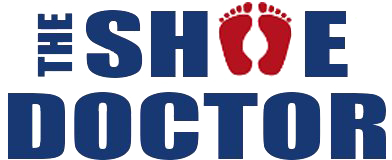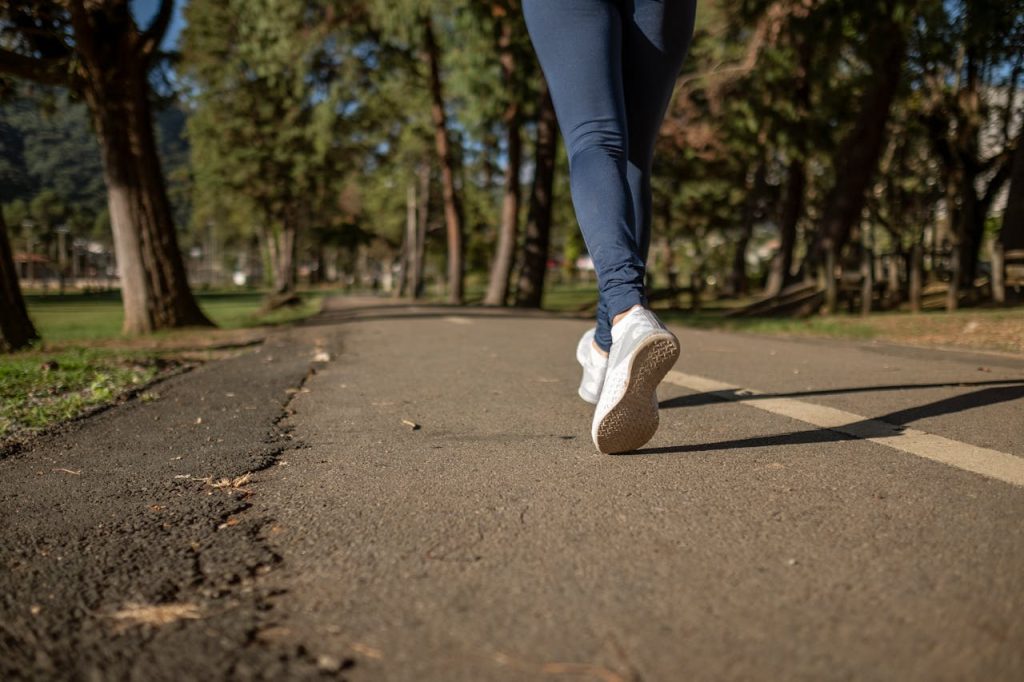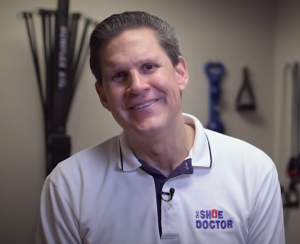Custom orthotics are crafted by capturing a foot scan or mold and then using the information to contour a one-of-a-kind insole that aligns with each individual’s foot. In order to achieve a proper fit, clinics typically employ 3D imaging or foam impressions, allowing them to capture the contours and pressure points of each foot. Following this, artisans use digital files to direct equipment which slices and forms material, then applies padding for support and comfort. It requires precision at every stage, as even minor errors can result in discomfort or instability. A proper fit aids your stride, aligns your body and minimizes injury. In the next few sections we’ll walk through the steps and why the small details matter, with real-world examples.
Key Takeaways
- Custom orthotics solve specific foot pain, alignment, athletic, and medical problems with personalized biomechanical support.
- The creation of custom orthotics is a multi-step process involving professional evaluation, advanced digital design, precise fabrication, and careful fitting, ensuring optimal support and comfort.
- Accuracy in design and manufacturing is critical – even small deviations in fit can limit effectiveness, decrease comfort and injury prevention.
- Digital technologies like 3D scanning and modeling make these orthotic devices more accurate, higher quality and customized — which all leads to better patient outcomes.
- Choosing appropriate materials—both rigid and soft—makes orthotics suitable to each user’s specific need, balancing support, flexibility and comfort.
- With consistent use, gradual adaptation, proper care and follow-ups, they provide insane long-term value to people across the globe.
Identifying the Need
Custom orthotics are not magic cure-alls, their worth lies in precise identification of need. Identifying the need for custom orthotics begins with an evaluation of your physical symptoms, alignment, activity levels and medical history.
Foot Pain
Foot pain is a common canary in the coal mine that orthotics are needed. Identifying pressure points – heel, arch, ball or toes – directs orthotic design for specific relief.
Many foot issues may prompt the need for custom orthotics:
- Plantar fasciitis
- Bunions
- Metatarsalgia
- Achilles tendinitis
- Persistent heel pain
- Flat feet or high arches
- Toe deformities
Chronic pain can keep you from accomplishing daily tasks and simply get you moving. Custom orthotics can relieve pain, increase comfort, and allow you or your loved ones to get back to life.
Body Alignment
Bad feet can cause knee, hip or lower back joint/muscle pain. Misaligned feet can alter body mechanics, creating uneven strain on joints and soft tissues. Because they correct foot position, orthotics improve alignment throughout the kinetic chain, minimizing joint strain.
Orthotics help keep you properly aligned and prevent long-term injury. Issues such as in- or out-turned feet, or persistent sprained ankles, are bullets that often indicate misalignment. Orthotics support the feet, rebalancing pressure and posture.
Athletic Performance
Athletes gain from orthotics that correspond to their foot mechanics, assisting in optimizing mobility as well as generating less injury. Custom supports can stabilize the foot during high-impact activity, which reduces fatigue and assists in preserving energy during extended sessions.
Knowing foot structure–if an athlete overpronates or supinates–can influence the orthotics design. This aids in supporting proper motion, boosting efficiency, and potentially prolonging athletic career longevity.
Medical Conditions
- Diabetes: Orthotics reduce pressure points, lower ulcer risk, and protect sensitive nerves.
- Arthritis: Proper support eases joint pain, absorbs shock, and improves walking comfort.
- Neuromas: Orthotics relieve nerve compression, reducing numbness and pain.
- Severe deformities: Custom designs address unique needs, easing symptoms and helping with mobility.
Individuals with chronic medical conditions frequently require custom orthotics to manage symptoms and enhance quality of life.
How Custom Orthotics Are Made
Custom orthotics come to life through a multi-step process that combines clinical expertise and cutting-edge technology. Each addresses biomechanical problems such as pain due to misalignment, overpronation or uneven pressure.
The Evaluation
We begin with a complete foot biomechanics and gait analysis. We check for short limbs, joint movement limits or posture flaws. A podiatrist identifies issues that require orthotic assistance. They use medical history and discuss with the individual about discomfort or previous injuries. Gait analysis technology assists notice any imbalances or strange walking mechanics. These results inform whether a functional or accommodative orthotic will work the best.
The Impression
Taking the right foot impression is crucial. Foam casting or 3D scanning captures the foot’s distinct form. Digital scans are favored for their detail and expediency. These techniques bring out the arch, heel, and pressure points, which assists in picking up curves that the off-the-shelf varieties overlook. The molds or scans act as the foundation for a genuine custom fit.
The Digital Design
Engineers use design software to construct a 3D model of the foot and orthotic. This step allows them to customize things such as arch height, foot width, or specialized support zones. Biomechanical data from previous steps is incorporated to mold the fit and function. 3D printing can even be used to print a prototype, so that it can be tested and altered if necessary prior to the final version.
The Fabrication
With the design locked in, expert technicians select durable, lightweight materials such as carbon fiber or EVA foam. Vacuum pressing forms the base shell, ensuring it’s strong without being rigid. Quality control at each stage maintains excellence. Custom orthotics can last 2–5 years with care and can be made for multiple shoes.
The Fitting
A fitting session tailors the orthotic to the individual’s foot and shoe. Fit modifications for comfort and support. Care/use education is provided. Comments are welcome.
Why Precision is Non-Negotiable
Precision is not a mouthpiece for custom orthotics. A minor mistake in fit or design can result in pain, restricted range of motion, or exacerbated foot pathology rather than relief. Mass-produced orthotics, for the “average” foot, seldom solve specific problems. By contrast, custom orthotics require precise measurements, conscientious design, and significant feedback to make sure every pair actually fits.
- Precision aligns orthotics for accurate biomechanical correction
- A tight fit prevents discomfort and supports daily activity
- Small inaccuracies can cause pain, pressure points or injury.
- Longevity and support depend on precise design and fit
- Insurers might want to see evidence that such work is indeed medically accurate, custom work.
Biomechanical Correction
Custom orthotics are crafted to address targeted biomechanical problems, like foot misalignment or unbalanced pressure. Such adjustments are only achievable when orthotics conform precisely to the foot. A little miscue in shape or support can mean that the correction not only doesn’t work but even worse, causes new problems.
When orthotics are custom crafted, they re-align the foot in a way that can relieve stress on the ankle, knee, and hip. This can optimize your stride and prevent long-term joint aches. Addressing the root cause of your movement issue, rather than simply masking its symptoms, is the secret to avoiding repetitive injuries.
Lasting Comfort
A great orthotic has to be comfy enough to wear daily. Which means it fits the foot like a glove, with exactly the right cushion in high pressure areas.
Materials and design must go hand-in-hand. Rigid in certain zones, malleable in others, all founded on an accurate map of the foot. Patient feedback is critical—minor adjustments can increase comfort significantly, and if orthotics aren’t comfortable, most individuals won’t wear them.
Comfort for the long haul is imperative. Without it, the therapy flops.
Injury Prevention
Precision-made orthotics can reduce the risk of overuse injuries. Runners/people who are on their feet all day/foot pain-alls need orthotics that compensate for their personal walking style. When there is a minor misalignment in foot strike, muscles and joints can pay the price in the long run.
Things like pronation or limb length discrepancy can only be identified with detailed screening. Good orthotics step in to fill these gaps, and regular reviews help keep the fit current as a user’s activity evolves.
Educate your audience on how orthotics can prevent common problems such as plantar fasciitis or bunions.
Long-Term Value
A commitment to precision can translate into less doctor visits.
It may save money on treatments later.
Better mobility leads to a better life.
Custom orthotics are a smart step for lifelong health.

The Digital Revolution in Orthotics
Digital tools are reinventing the process that brings custom orthotics to life — making it move faster, with more attention and with precision that used to be out of reach. For years, specialists would rely on plaster casts or basic 2D scanners to sense a general blueprint of someone’s foot. This ancient method took weeks and allowed for minute error. With 3D scanning, you can capture every curve and dip of a foot, to within 0.1 millimeters. These scans require only minutes. That is, the orthotic will fit better, feel better, and last longer.
With digital modeling, the scan data feeds directly into design software. This lets engineers and medical experts see the foot from all sides and adjust on the fly. If you need some additional arch support or have an oddly shaped bone, the orthotic can be rapidly customized. That’s where 3D printing comes in. State-of-the-art printers utilize lightweight, sturdy, and oftentimes breathable materials to construct each orthotic. Not just a copy of the foot, but one constructed for a specific need – running, standing all day, or assisting a child with a medical condition. It forsakes the “one-size-fits-all” approach that not infrequently fails those with special needs.
The quickness is another major shift. No longer having to wait weeks, you can now get a finished orthotic in a matter of days. For individuals requiring immediate attention—such as injured athletes or kids with rapidly developing feet—this can translate to an impactful improvement in quality of life. Digital files are simple to archive, transmit, and modify as the individual’s requirements evolve.
Digital tools assist in patient education. With 3D models and transparent visuals, it’s way simpler for patients to see what’s going on with their feet and why modifications are occurring. This engages patients more in their own care, resulting in improved outcomes.
Nascent tech, such as AI, is beginning to have a role as well. AI can scan massive volumes of foot data, identify trends, and recommend design modifications that might not be apparent to a human. This keeps driving the industry forward — for improved outcomes, more comfort, and new possibilities for hitherto underserved individuals.
Materials and Their Purpose
Accuracy in custom orthotics manufacturing lies in the careful choice of materials based on the user’s foot, level of activity and specific health requirements. Each material adds its own magic to the orthotic’s performance, comfort and durability. The following table outlines the primary materials and their purpose.
Material Type | Example Materials | Main Function | Notes on Usefulness |
Rigid | Carbon fiber, polypropylene | Maximum control and support | Used for severe deformities, long-lasting |
Semi-rigid | EVA (ethylene vinyl acetate), thermoplastics | Balanced support and flexibility | Suits sports, daily wear |
Soft (Accommodative) | Foam, silicone, cork | Cushioning, pressure relief | Ideal for diabetes, arthritis |
Rigid Control
Rigid orthotics incorporate stiff materials such as carbon fiber or hard plastics to provide strong support to the foot. They assist in supporting the arch and preventing excessive motion — essential for those with flat feet or high arches. These orthotics should last for several years with care and can be a good way to control pain from arthritis or tendonitis by distributing pressure across the foot.
Individuals with significant foot deformities or arthritic pain usually experience improvement using a rigid control. Because the material doesn’t flex much, it stabilizes the foot and can even help decelerate the progression of an issue. Medics select these for individuals requiring complete assistance in ambulating, standing, or running.
Semi-Rigid Support
Semi-rigid orthotics bridge the gap between hard and soft through the utilization of materials such as EVA and flexible plastics, hoping this combination will allow the orthotic to flex a bit while still stabilizing the foot. They fit a lot of different foot shapes and are a solid option for the active folks out there.
Athletes, runners and walkers who walk a lot each day can opt for semi-rigid support for comfort and to help prevent overuse pain. These orthotics can fit in most shoes and are rugged enough to last years. They help manage foot motion without irritation.
Semi-rigid materials are versatile, so they’re frequently found on both sports and everyday shoes.
Soft Accommodation
Soft orthotics utilize materials such as foam or silicone to provide cushion and comfort to sore or compromised feet. They absorb shock and relieve pressure from sensitive areas, which is particularly beneficial for individuals with diabetes, arthritis or neuropathy.
A soft orthotic doesn’t have the longevity of a rigid, yet it provides immediate comfort. Anyone who stands for long hours or struggles with blisters and calluses may like these more. Its plush foundation assists with balance and can prevent minor injuries from escalating.
Physicians may recommend soft orthotics for seniors or those with skin or neuropathic concerns. They reduce the agony of walking and assist with chores.
Importance of Material Choice
The proper material determines the longevity of the orthotic and the effectiveness. Custom orthotics differ from off-the-shelf inserts in that they use higher quality, more durable materials and are tailored to the wearer’s foot. New tech, from 3D scanning to digital fabrication, lets pros optimize material and form for each individual. This step is crucial for those with high needs or special health requirements.
Life with Your Orthotics
Custom orthotics sculpt your movement daily. They hug your feet, but the resulting transformation can shake up your entire lifestyle. Getting used to orthotics requires patience, but the reward is permanent relief. People who walk or stand or work long hours on hard surfaces tend to feel the difference the most.
The Break-in Period
The initial days with your new custom orthotics are always strange. Most have to retrain themselves to walk or move, as the support realigns their feet. It is good to wear your orthotics only a few hours initially, then add time as your feet get used to them. This slow start can prevent pain and let your body adjust.
Most folks adjust to orthotics in weeks. Be on the lookout for pain or pressure points, as these can indicate an adjustment is necessary. Good indicators are reduced foot pain, improved balance and stable gait. If redness or soreness persists, inform your provider. It’s the little things that count.
Proper Care
Cleaning your orthotics keeps them fresh and functional. Treat’em with a mild soap and lukewarm water. Stay away from harsh chemicals. Dry them flat, out of direct heat or sun, to maintain their shape.
Keep orthotics dry and cool when not in use. Examine for cracks, flattening or worn spots on a monthly basis. If handled with care, orthotics can last for a few years, providing consistent stability and comfort. Bring them to follow-up checks so your provider can see if they need repair or replacement.
Follow-up Adjustments
Periodic follow-ups help keep orthotics working their best. These visits allow your provider to verify the fit and determine if any adjustments should be made. Because sometimes feet morph or your needs evolve, little adjustments make a big difference.
If you experience new pain or your orthotics feel off, bring it up. Keep in touch with your provider. Good fit = good results, and small fixes can prevent big problems.
Checklist for Successful Transition
- Wear orthotics for short periods at first
- Increase wear time slowly
- Clean and dry orthotics often
- Store flat, away from heat
- Check for wear monthly
- Schedule regular follow-up visits
- Report pain or changes early
Conclusion
To craft custom orthotics, labs rely on scans or molds to capture an accurate footprint of each foot. Professionals then mold the fit, select the appropriate materials, and customize every pair to assist with discomfort, biomechanics, or reinforcement. Even small mistakes can cause sore spots or mess with your walking, so labs do close checks at every stage. Digital wizardry now assists with speed and improved fit, but seasoned hands still verify the minutiae. The hard, light or soft stuff gets chosen to correspond to how we walk/wake day to day. Life with quality orthotics is like riding on a magic carpet! So for all you considering a pair, shoot your questions, express your needs and collaborate with the pros to score the perfect fit.
Frequently Asked Questions
1. How are custom orthotics made?
Custom orthotics are created using exact foot measurements. Experts employ 3D scans or casts, and then digitally design and manufacture orthotics customized to you for optimum comfort and support.
2. Why does precision matter in custom orthotics?
Precision guarantees orthotics fit. Precision fit supports your foot architecture, enhances biomechanics, and mitigates discomfort or harm. Bad fit can exacerbate foot issues.
3. What materials are used to make custom orthotics?
Custom orthotics utilize materials such as plastic, foam, or carbon fiber. The selection is based on your requirement—some support you firmly and others are soft or flexible.
4. How does digital technology improve orthotics?
Digital technology can take very precise foot scans. This leads to orthotics that are tailored to your precise foot contours, enhancing comfort, efficacy, and durability.
5. Who should consider getting custom orthotics?
If you have any foot, ankle, knee or back pain. Super shoes for people with flat feet, high arches, or certain medical conditions require custom orthotics.
6. How do custom orthotics improve daily life?
They alleviate pain, prevent injuries and promote healthy motion. Walking, standing and sports can become more comfortable and safe for numerous individuals with the help of custom orthotics.
Stop Letting Foot Fatigue Slow You Down — Get Relief With Custom Orthotics From The Shoe Doctor
If your feet feel sore, heavy, or worn out after a long day, custom orthotics could be the game-changer you’ve been looking for. Whether you’re on your feet for work or daily errands, fatigue often comes from poor support, uneven pressure, and misalignment. Our custom orthotics are built to correct those issues—supporting your arches, improving posture, and helping you stay energized throughout the day.
At The Shoe Doctor, we’ve spent over 20 years creating orthotics that do more than cushion your feet—they target the root causes of pain and fatigue. Using advanced 3D foot-mapping technology, Russell designs orthotics tailored to your foot structure and walking style. Through our partnership with the Spine & Injury Medical Center in San Jose, we also take your overall body mechanics into account to support lasting results.
Located in the South Bay Area? Book your free consultation today and see how custom orthotics from The Shoe Doctor can help you move with comfort, confidence, and less fatigue.
Disclaimer
The materials available on this website are for informational and entertainment purposes only and are not intended to provide medical advice. You should contact your doctor for advice concerning any particular issue or problem. You should not act or refrain from acting based on any content included in this site without seeking medical or other professional advice. The information presented on this website may not reflect the most current medical developments. No action should be taken in reliance on the information contained on this website, and we disclaim all liability for actions taken or not taken based on any or all of the contents of this site to the fullest extent permitted by law.


